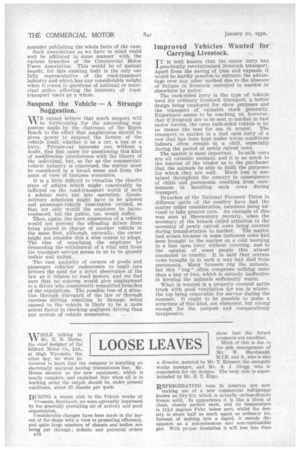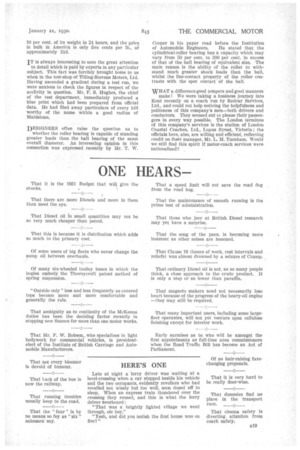'W HILE talking to Mr. E. R. ITorne, the chief designer
Page 44

Page 45

If you've noticed an error in this article please click here to report it so we can fix it.
of the Gilford Motor Co., Ltd., at High Wycombe, the other day, we were interested to learn that the company is installing an electrically operated moving transmission line. Mr. Horne showed us the new equipment, which is nearly complete, and explained that when all is in working order the output should be, under present conditions, about 33 chassis per ),yeek.
DURING a recent visit to the Vulcan works at Crossens, Southport, we were agreeably impressed by the generally prevailing air of activity and good organization.
Considerable changes have been made in the layout of the shops with a view to promoting efficiency, and quite large numbers of chassis and bodies are being put through; definite and potential orders show that the future prospects are excellent.
Much of this is due to the able management of Mr. W. Macdcinald, M.I:E. and S., who is also a director, assisted by Mr. T. Rimmer, the energetic works manager, and Mr. S. J. Gregg, who is responsible for the designs. The body side is superintended by Mr. E. T. Edge.
REFRIGERATING vans in America are DOW making use of a new commercial refrigerant known as Dry-Ice, which is actually carbon-dioxide frozen solid. In appearance it is like a block of clean, closely packed snow, and its temperature is 114.5 degrees Fahr. below zero, whilst the density is about half as much again as ordinary ice. Instead of melting into a liquid, it :merely disappears as a non-poisonous and non-combustible gas. With proper insulation it will lose less than 10 per cent, of its weight in 29 hours, and the price in bulk in America is only five cents per lb., a approximately 21d.
IT is always interesting to note the great attention to detail which is paid by experts in any Particular subject. This fact was forcibly brought home to us when in the test-shop of Tilling-Stevens Motors, Ltd. Having ascended a gradient during a test run, we were anxious to check the figures in respect of the acclivity in question. Mr. P. S. Hughes, the chief of the test department, immediately produced a blue print which had been prepared from official data. He had filed away particulars of every hill worthy of the name within a good radius of Maidstone.
DESIGNERS often raise the question as to whether the roller bearing is capable of standing greater loads than the ball bearing of the same overall diameter. An interesting opinion in this connection was expressed recently by Mr. T. W. Cooper in his paper read before the Institution of Automobile Engineers. He stated that the cylindrical-roller bearing has a capacity which may vary from 50 per cent. to 200 per cent, in excess of that of the ball bearing of equivalent size. The main reason is the ability of the roller to withstand much greater shock loads than the ball, whilst the line-contact property of the roller contrasts with the spot contact of •the WHAT a difference good tempers and good manners make! We were taking a business journey into Kent recently on a coach run by Redcar Services, Ltd., and could not help noticing the helpfulness and politeness of this company's men—both drivers and conductors. They seemed out to please their passengers in every way possible. The London terminus of this company's services is the station of London Coastal Coaches, Ltd., Lupus Street, Victoria; the officials here, also, are willing and efficient, reflecting credit on their manager, Mr. L. M. Turnham. Would we still find this spirit if motor-coach services were nationalized ?




















































































































